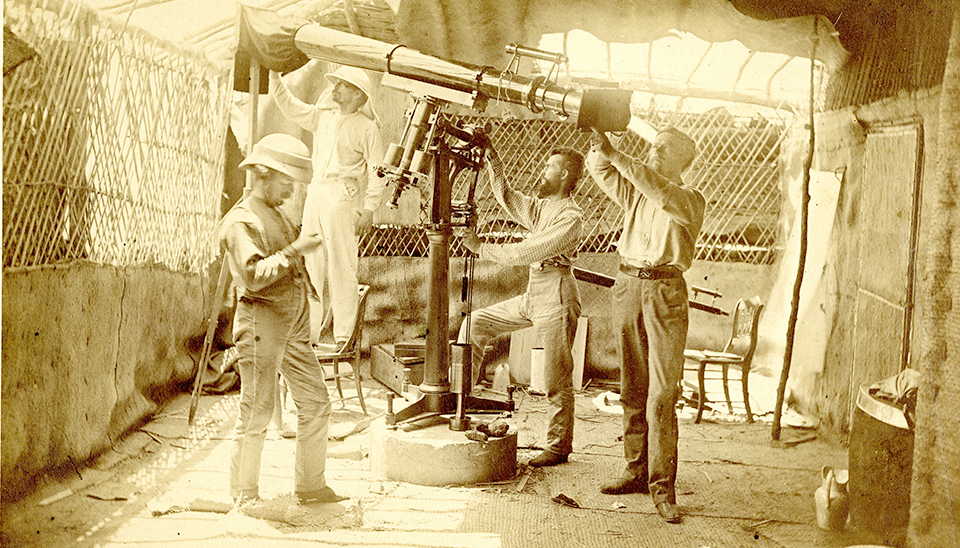Although common, hearing loss was not an immediate concern for recently wounded soldiers during World War II. In the European theater, a patient was not seen by an otolaryngologist (ear, nose, and throat specialist) until either they had reached a station or general hospital located outside the combat zone. In the Pacific theater, otolaryngologists were stationed on hospital ships. Once at the hospitals, physicians used a variety of instruments to assess damage, and eventually hearing technology and research advanced as hearing loss and prevention became a top concern for the military.
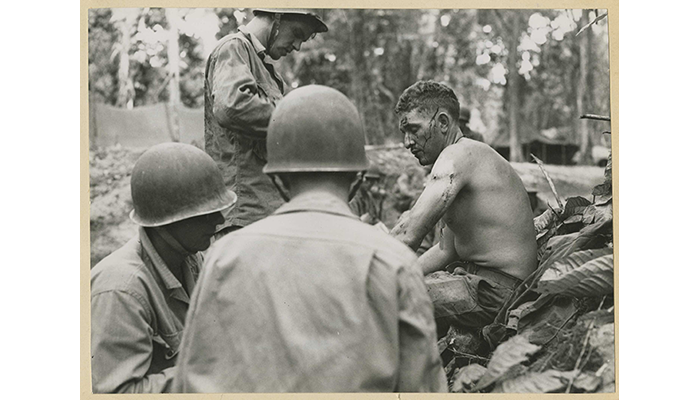
Combat medics treat a soldier of 37th Infantry Division who sustained head and arm wounds from a Japanese hand grenade. (Photo courtesy of U.S. Army Signal Corps)
During World War II, combat hearing loss was frequently the result of a detonation of high explosive artillery, bombs, or grenades. However, wartime otologists found no consistent correlation between damage to the eardrum and hearing loss. Some patients with a ruptured eardrum had normal hearing, while others with no damage suffered profound hearing loss. Physicians speculated that the hearing loss was a result of damage to the labyrinth or cochlea of the inner ear. Many patients soon regained their hearing, although some continued to suffer from tinnitus, a consistent ringing or buzzing noise in one or both ears.
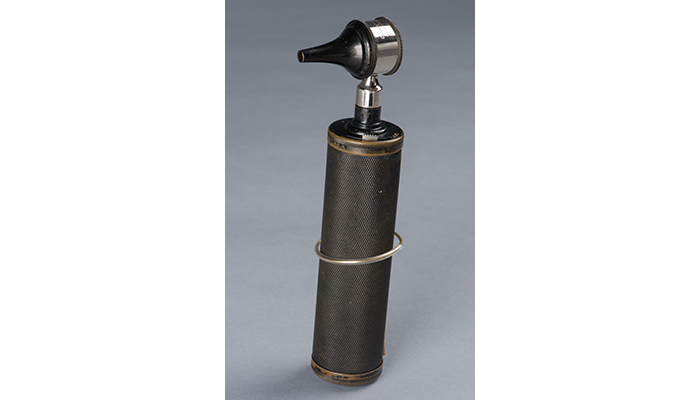
A DeZeng-Standard Company otoscope which was used at Walter Reed General Hospital. (180207-D-MP902-0068)
Once a patient was transferred to a station or general hospital, physicans used otoscopes to identify damage to the ear canal and ear drum. These examinations were difficult on wounded patients, and small tears were frequently missed.
Tuning forks were considered a better instrument for determining hearing loss. When struck, the fork emitted a tone at a certain frequency. If the patient could not hear the fork, he was determined to have suffered from hearing loss in a particular frequency range, usually high or low.
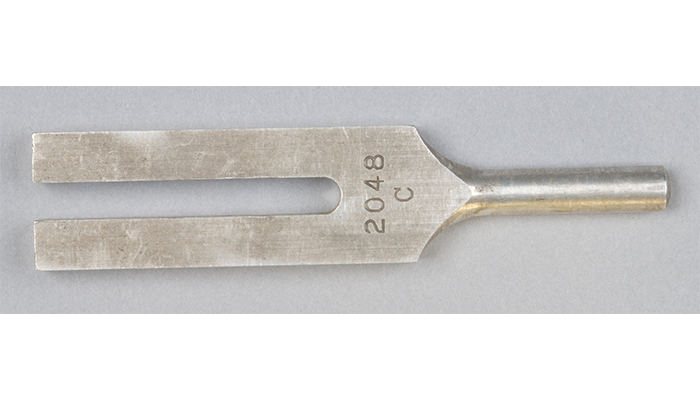
Tuning fork used by COL Anthony DiLorenzo, Commander, U.S. Army Health Clinic, Pentagon. (180207-D-MP902-0040)
Otologists also administered the Weber test by placing and striking the fork at the middle of the patient's forehead. This screening test can detect one-sided hearing loss by noting within which ear the sound was better heard. In an uninjured patient, the sound was the same in both ears.
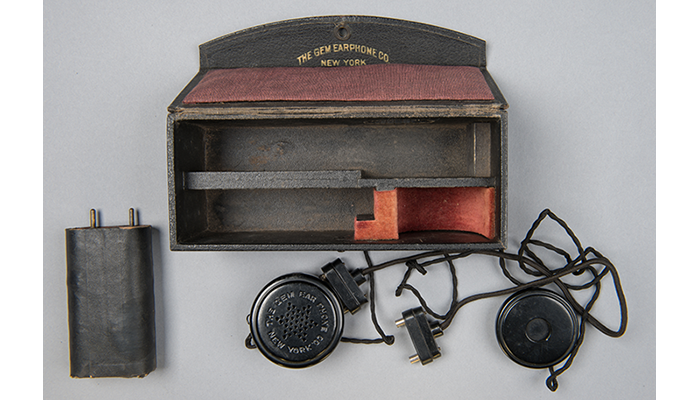
A Gem Model 32 Hearing Aid, circa 1940, which consists of a receiver, an earphone, a three-volt carbon zinc battery, and a carrying case. (180207-D-MP902-0047)
Treatments for most types of hearing loss during this period involved the issuance of hearing aids. The first wearable hearing aids, introduced at the beginning of the war, were issued to service members who had sustained hearing loss in the line of duty. This Gem Model 32 Hearing Aid, introduced circa 1940, consisted of a receiver, an earphone, a 3V carbon zinc battery, and a carrying case. The microphone receiver was either positioned in the case, placed near the subject to be heard, or held or worn by the user.
Today, hearing technology and medicine have advanced way beyond the capabilities of World War II. Along with treatment, military research has focused on the prevention of hearing loss. In 2009, as a part of the National Defense Authorization Act, the Department of Defense established the Hearing Center of Excellence to focus on the prevention, diagnosis, mitigation, treatment, and rehabilitation of hearing loss and auditory injury.
Resources
Department of Defense Hearing Center of Excellence
Relevant Links:
Noise Induced Hearing Loss
https://www.ncbi.nlm.nih.gov/pmc/articles/PMC4455974/
Impact of Noise on Hearing in the Military
https://www.nidcd.nih.gov/health/noise-induced-hearing-loss



